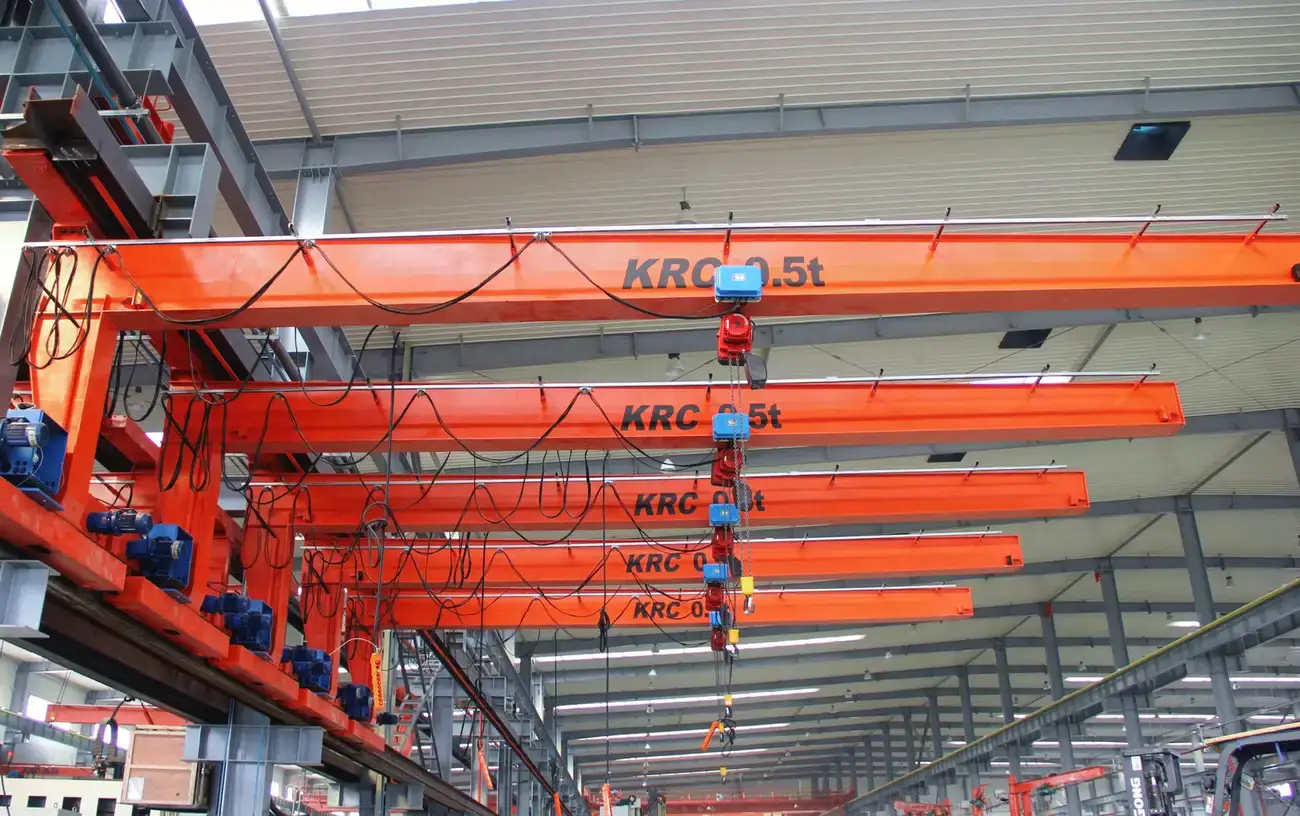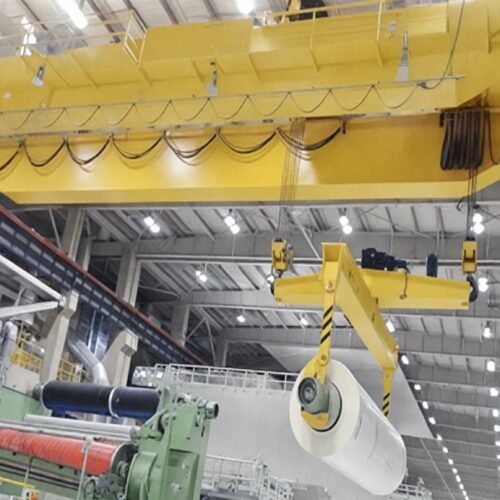wall travelling jib crane Safety Certifications
A wall traveling jib crane is a versatile piece of lifting equipment, commonly used in various industrial settings for material handling. Ensuring the safety of such equipment is paramount, which is why adherence to specific safety certifications and standards is crucial.
1. OSHA Compliance:
The Occupational Safety and Health Administration (OSHA) sets forth regulations to ensure safe working conditions. Compliance with OSHA standards (particularly OSHA 1910.179 for overhead and gantry cranes) is mandatory in the U.S. These guidelines cover inspection, maintenance, and operational safety.
2. ASME Standards:
The American Society of Mechanical Engineers (ASME) offers several standards pertinent to lifting devices. ASME B30.11 specifically addresses safety requirements for Monorails and Underhung Cranes, including wall traveling jib cranes. This standard covers design specifications, inspection protocols, and operator training requirements to prevent accidents and equipment failures.
3. CE Marking (Conformité Européene):
In the European Union, the CE marking is crucial. It signifies that the crane meets EU safety, health, and environmental protection requirements. EN 14985 and EN 13155 are key standards for cranes and lifting accessories, respectively. These ensure rigorous safety in terms of design, construction, and testing.
4. ISO Standards:
The International Organization for Standardization (ISO) provides globally recognized standards. ISO 9001 for quality management, ISO 14001 for environmental management, and ISO 13849 for the safety of machinery and control systems are particularly relevant. Compliance demonstrates a commitment to maintaining high safety and quality standards.
5. National Board of Boiler and Pressure Vessel Inspectors:
Though primarily for pressure vessel integrity, applicable in certain crane hydraulic systems. National Board certification indicates adherence to stringent safety protocols during fabrications, inspections, and repairs.
Thorough, routine inspections by qualified personnel, proper operator training, adherence to load capacities, and maintaining clear communication protocols are essential for ongoing safety. Leveraging these certifications and standards will significantly reduce risks and ensure safe crane operation.
List Reference Technical Parameters of “wall travelling jib crane”
A wall travelling jib crane is a type of overhead lifting system commonly used in industrial settings for material handling. Here are the key technical parameters that define its specifications and performance:
1. Load Capacity (SWL, Safe Working Load):
– Indicates the maximum weight the crane can safely lift.
– Typical range: 0.5 to 10 tons.
2. Span:
– The horizontal distance that the jib arm covers.
– Typical span: 3 to 12 meters.
3. Height Under Boom:
– The vertical distance from the floor to the underside of the jib arm.
– Can vary based on the specific application requirements.
4. Travelling Speed:
– The speed at which the trolley or hoist moves along the jib.
– Typical speeds: 20 to 40 meters per minute.
5. Rotation Angle:
– The angle through which the jib arm can rotate.
– Usually limited to 180 degrees for wall-mounted systems.
6. Motor Power:
– The power of the driving motor for the hoist and trolley.
– Typically ranges from 0.5 to 2.2 kW.
7. Electrical Requirements:
– Voltage and phase specifications for powering the system.
– Commonly 380V/50Hz or 460V/60Hz, 3-phase.
8. Control System:
– Modes of operation such as pendant control, radio remote control, or both.
– Integration with automated systems is also possible.
9. Material and Construction:
– Typically made from high-strength steel for durability and safety.
– Anti-corrosion coatings may be applied for certain environments.
10. Safety Features:
– Includes overload protection, emergency stop switches, limit switches to prevent over-travel, and anti-fall devices.
These technical parameters are crucial for determining the suitability of a wall travelling jib crane for specific industrial applications, ensuring optimal performance, safety, and efficiency.
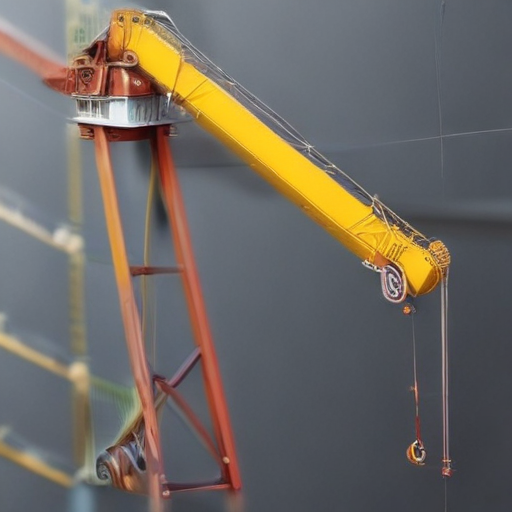
List Product features of “wall travelling jib crane”
A wall traveling jib crane is an advanced material handling system designed for applications where heavy lifting and accurate positioning are required along a specific path. Here are its key product features:
1. Space-Saving Design:
– Mounts directly to building columns or walls, freeing up floor space.
– Ideal for locations with limited floor space or where overhead cranes are impractical.
2. Traveling Mechanism:
– Equipped with a trolley that travels along a fixed horizontal rail attached to the wall.
– Allows for extended coverage along the length of the rail.
3. Swiveling Jib Arm:
– Features a jib arm that can swivel up to 180 degrees or more, enhancing operational flexibility.
– Designed for easy movement and precise positioning of loads.
4. High Load Capacity:
– Can handle a wide range of weights, typically ranging from a few hundred kilograms to several tons.
– Suitable for heavy-duty lifting tasks.
5. Customizable Height and Reach:
– Adjustable boom length and height to accommodate various operational needs.
– Custom configurations available to fit specific site requirements.
6. Durable Construction:
– Made from high-strength steel and other robust materials to ensure longevity and safety.
– Often features corrosion-resistant finishes for outdoor or harsh environments.
7. Motorized or Manual Operation:
– Options for manual or motorized rotation and travel to suit different needs and budgets.
– Motorized models often come with remote controls for enhanced ease of use.
8. Safety Features:
– Equipped with safety stops, limit switches, and emergency shutoffs to prevent accidents.
– Load brakes and overload protection mechanisms for safe lifting operations.
9. Ease of Installation:
– Typically easier and less intrusive to install compared to overhead cranes.
– Minimal structural modifications to existing buildings required.
10. Versatile Applications:
– Common in workshops, warehouses, assembly lines, and maintenance facilities.
– Suitable for tasks such as lifting heavy machinery, pallet handling, and assembly operations.
These features make wall traveling jib cranes highly effective for improving operational efficiency while ensuring safety and reliability in a variety of industrial settings.
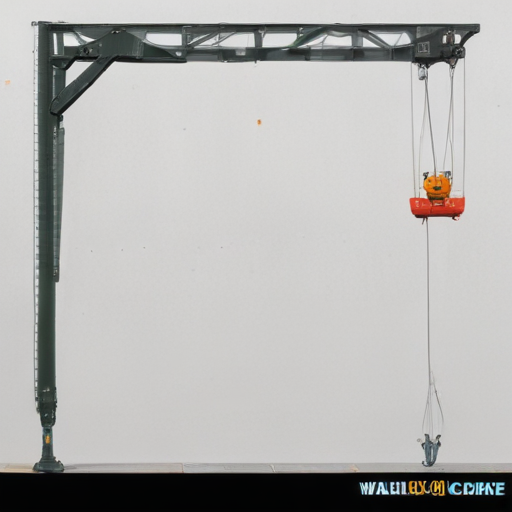
List Various Types of “wall travelling jib crane”
Certainly! Wall traveling jib cranes are a type of crane specifically designed to travel along a wall or other vertical structure, maximizing space efficiency while providing reliable lifting and load-moving capabilities. Here are various types of wall traveling jib cranes:
1. Manual Wall Traveling Jib Crane:
– Operated manually, these cranes are suitable for lighter loads and shorter distances. They’re cost-effective and require minimal maintenance.
2. Motorized Wall Traveling Jib Crane:
– Equipped with electric motors, these cranes are designed for more intensive workload and longer travel distances. They provide enhanced efficiency and ease of use.
3. Telescoping Wall Traveling Jib Crane:
– Featuring an extendable arm, these cranes offer greater flexibility in terms of reach and working space, ideal for areas with varying lifting requirements.
4. Freestanding Wall Traveling Jib Crane:
– Although primarily attached to a wall for stability, freestanding models include additional support structures, making them versatile for varied applications.
5. Underbraced Wall Traveling Jib Crane:
– With the bracing located underneath the boom, these cranes are best for scenarios where overhead space is limited, allowing for more compact applications.
6. Overbraced Wall Traveling Jib Crane:
– Featuring bracing above the boom, this design is used when there are no overhead space constraints. It often supports heavier loads and longer spans.
7. Low-Headroom Wall Traveling Jib Crane:
– Designed with a low-profile for environments with height restrictions. They optimize vertical space usage while maintaining lifting capacity.
8. Articulating Arm Wall Traveling Jib Crane:
– These feature a jointed arm allowing for more complex movement patterns and a high degree of maneuverability, perfect for navigating obstacles.
9. Cantilevered Wall Traveling Jib Crane:
– The arm extends beyond the point of attachment, without additional ground support. Ideal for applications requiring extensive reach along a wall.
10. Heavy-Duty Wall Traveling Jib Crane:
– Built for industrial applications, these cranes are robust and capable of handling heavy loads in demanding environments.
Understanding the specific needs of the space and lifting requirements will help in selecting the appropriate type of wall traveling jib crane.
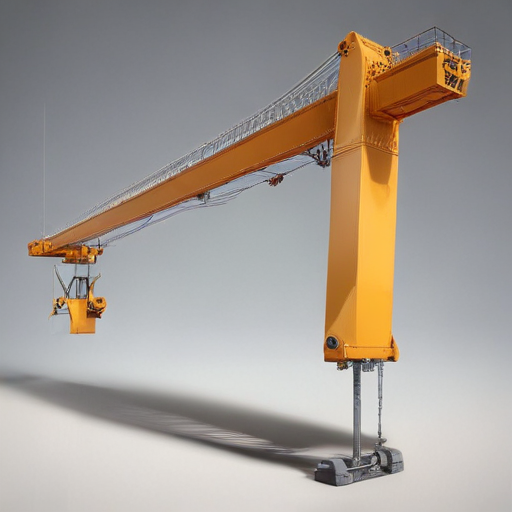
List Application of “wall travelling jib crane”
A wall traveling jib crane is a versatile piece of lifting equipment used in various industrial settings. It consists of a horizontal jib mounted on a movable carriage that travels along a wall or vertical support structure. Here are some of its key applications:
1. Manufacturing Plants: In manufacturing environments, wall traveling jib cranes assist in moving materials and components between workstations, assembly lines, and storage areas. They enhance operational efficiency by reducing material handling times and improving workflow.
2. Warehouses: These cranes are used in warehouses for loading and unloading goods, as well as moving heavy items to and from storage racks. Their ability to travel along walls maximizes floor space, ensuring efficient use of storage areas.
3. Maintenance and Repair Shops: In automotive and machinery repair shops, wall traveling jib cranes facilitate the lifting and positioning of heavy parts and equipment, aiding technicians in repair and maintenance tasks.
4. Marine and Shipyards: These cranes are employed in shipyards for tasks such as lifting and positioning ship components, machinery, and maintenance equipment. They are crucial for handling heavy loads in confined spaces along the docks and work areas.
5. Assembly Lines: In assembly line operations, wall traveling jib cranes are used to transport parts and assemblies between different stages of production. They support ergonomic working conditions by reducing manual lifting and positioning tasks.
6. Aerospace Industry: In the aerospace sector, these cranes assist in the precise handling of aircraft components and tools, ensuring safe and efficient assembly and maintenance procedures.
7. Foundries and Metalworking Shops: Wall traveling jib cranes are used to move heavy molds, castings, and metalwork components, ensuring smooth and safe operations in environments dealing with molten metal and heavy materials.
8. Textile and Paper Mills: In textile and paper mills, these cranes help in managing bulky rolls of fabric and paper, enhancing the speed and efficiency of production processes.
In summary, wall traveling jib cranes offer flexibility, efficient material handling, and space-saving benefits, making them indispensable across various industries that require the lifting and movement of heavy objects within confined spaces.
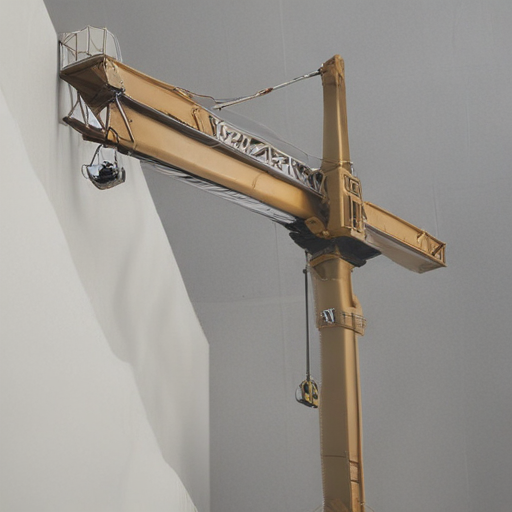
List Buyer Types of “wall travelling jib crane”
When it comes to wall travelling jib cranes, various buyer types can be identified based on industry requirements and operational needs. Here are some notable buyer types:
1. Manufacturing Companies:
– Use Case: Handling materials and components on the production floor.
– Features Needed: High load capacity, precise control, durability.
2. Warehousing and Logistics:
– Use Case: Loading, unloading, and transferring goods within the warehouse.
– Features Needed: Flexibility, ease of installation, efficient space utilization.
3. Automotive Industry:
– Use Case: Moving heavy automotive parts such as engines and chassis.
– Features Needed: High precision, robust construction, safety features.
4. Construction Firms:
– Use Case: Lifting and moving building materials on construction sites.
– Features Needed: High load capacity, portability, rugged design.
5. Aerospace Industry:
– Use Case: Handling delicate and high-value components.
– Features Needed: Precision, stability, advanced control systems.
6. Fabrication Shops:
– Use Case: Moving metal sheets, assemblies, and welded structures.
– Features Needed: Maneuverability, strength, ease of access to all shop areas.
7. Energy Sector:
– Use Case: Handling large and heavy equipment in power plants and refineries.
– Features Needed: High load-bearing capacity, reliable operation, minimal downtime.
8. Shipyards and Marine Industry:
– Use Case: Moving heavy ship parts and marine equipment.
– Features Needed: Corrosion resistance, long reach, high load capacity.
9. Pharmaceuticals and Cleanrooms:
– Use Case: Material handling in controlled environments.
– Features Needed: Contamination control, sterility, precision handling.
10. Furniture Manufacturing:
– Use Case: Handling bulky and heavy furniture parts.
– Features Needed: Ease of use, high maneuverability, load capacity suited for wood and assembled furniture parts.
Each buyer type has unique requirements based on the industry, operational demands, and specific applications. The chosen jib crane model should align with these needs to ensure efficient and safe material handling.
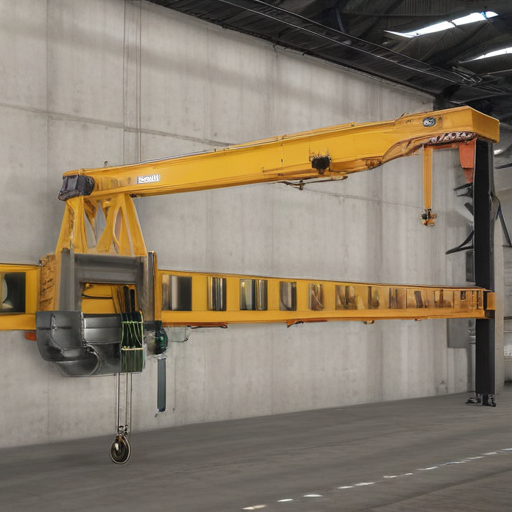
List “wall travelling jib crane” Project Types for Different Industries
Certainly! Wall travelling jib cranes are versatile and efficient tools used across various industries to facilitate lifting and transporting materials within a workspace. Below are different project types for which these cranes are commonly utilized:
Manufacturing Industry
– Assembly Line Stations: Wall travelling jib cranes streamline the transport of components between workstations.
– Material Handling: Ensuring efficient movement of raw materials and finished goods within the production area.
Automotive Industry
– Engine Assembly: Assisting in the precise lifting and placement of heavy engine parts.
– Car Body Construction: Facilitating the handling and positioning of large panels and car bodies.
Aerospace Industry
– Component Manufacturing: Handling and transporting various aircraft components.
– Maintenance and Repairs: Assisting in maintaining and repairing aircraft parts effectively.
Warehousing and Logistics
– Goods Transport: Efficiently moving goods from storage areas to loading bays.
– Stock Management: Organizing and rearranging stock to optimize space usage and accessibility.
Metal Fabrication
– Welding Stations: Assisting welders by holding and maneuvering heavy metal parts.
– Cutting and Shaping: Handling large metal sheets and components during cutting and shaping processes.
Chemical and Pharmaceutical Industry
– Equipment Handling: Assisting in the installation and maintenance of heavy processing equipment.
– Loading and Unloading: Facilitating the safe movement of containers with raw materials and finished products.
Marine and Shipbuilding
– Component Installation: Handling large components like engines and propellers during ship assembly.
– Dockside Operations: Assisting in loading and unloading cargo and materials for ship construction and maintenance.
Construction Industry
– Material Placement: Assisting in the accurate placement of building materials at various construction stages.
– Precast Concrete Handling: Transporting precast concrete elements within the construction site.
Textile Industry
– Machine Maintenance: Assisting in the maintenance and installation of heavy textile machinery.
– Material Transport: Efficiently moving large rolls of fabric and other materials within the plant.
Wall travelling jib cranes are adaptable and enhance operational efficiency, safety, and productivity across these diverse applications.
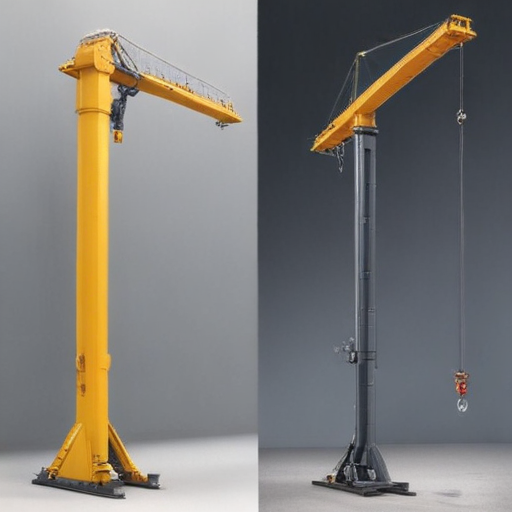
wall travelling jib crane Accessories Upgrades and Custom Manufacturing Options
Wall traveling jib cranes are integral to many industrial operations, offering versatile and efficient material handling solutions. Enhancing their functionalities through accessories, upgrades, and custom manufacturing can significantly improve performance and safety. Here are some popular options:
1. Electric Hoists: Upgrading manual hoists to electric hoists ensures smoother and quicker lifting, reducing manual effort and increasing efficiency.
2. Remote Controls: Adding wireless remote controls allows operators to maneuver loads from a safe distance, enhancing operational safety and precision.
3. Variable Frequency Drives (VFDs): Installing VFDs improves control over crane speed and motion, leading to smoother operations and reduced wear on components.
4. Load Monitoring Systems: Including load monitoring devices ensures that operators are always aware of the load weight, preventing overloading and potential accidents.
5. Rotation Stops and Limit Switches: These prevent the crane from moving beyond its designated path, ensuring precise operations and minimizing risks of collisions and structural damage.
6. Custom Length Arms and Heights: Manufacturing with customized arm lengths and lifting heights tailors the crane to specific application needs, optimizing space utility and operational efficiency.
7. Specialized Gripping Attachments: Adding customized end effectors like clamps, magnets, or vacuum lifters can facilitate the handling of diverse material types, enhancing job versatility.
8. Enhanced Safety Features: Upgrading to include fall protection equipment, safety latches, and emergency stop buttons boosts operational safety immensely.
9. Anti-Corrosion Coatings: Applying specialized coatings can prolong the crane’s lifespan when operating in harsh environments, such as in chemical plants or outdoors.
10. Energy Chain Systems: Implementing energy chain systems ensures neat and safe cable management, reducing the risk of cable entanglement and damage.
By investing in these accessories and upgrades, and leveraging custom manufacturing options, you can tailor wall traveling jib cranes to meet specific operational needs, thereby maximizing productivity, safety, and reliability.
List Quality Control and The Manufacturing Process of “wall travelling jib crane”
Quality Control
1. Material Inspection:
– Verify raw materials for compliance with specifications.
– Inspect steel for grade, thickness, and structural integrity.
2. Precision Fabrication:
– Ensure accurate cutting and welding via automated and manual checks.
– Monitor dimensional accuracy through calipers, micrometers, and laser measuring tools.
3. Non-Destructive Testing (NDT):
– Use ultrasonic, magnetic particle, and dye penetrant tests to detect hidden flaws.
4. Load Testing:
– Conduct load tests to confirm the crane’s capacity and reliability under operational conditions.
5. Assembly Verification:
– Inspect alignment and secure fastening of components.
– Verify electrical and mechanical connections.
6. Final Inspection:
– Perform a comprehensive review, including operational checks and documentation verification.
Manufacturing Process
1. Design and Engineering:
– Create precise CAD models and engineering blueprints.
– Perform structural analysis and simulations.
2. Material Procurement:
– Source high-quality steel and components following material specifications.
3. Cutting and Shaping:
– Cut steel plates and profiles using CNC machines, laser cutters, or plasma cutters.
– Form components through bending, pressing, and other shaping processes.
4. Welding and Assembly:
– Weld components using MIG, TIG, or arc welding techniques.
– Assemble the crane parts, ensuring proper fits and tolerances.
5. Surface Treatment:
– Apply anti-corrosive coatings, such as galvanizing or painting, to enhance durability.
– Conduct quality checks during and after coating application.
6. Component Integration:
– Install electrical components, motors, and control systems.
– Integrate safety features and load-handling attachments.
7. Testing and Validation:
– Perform functional and load testing to verify performance.
– Validate safety features including limit switches and emergency stop systems.
8. Final Quality Checks:
– Execute a thorough final inspection, checking operational efficacy and adherence to specifications.
– Review and complete all necessary documentation for compliance and certification.
9. Packaging and Shipping:
– Package carefully to prevent damage during transit.
– Coordinate logistics for timely delivery to the customer site.
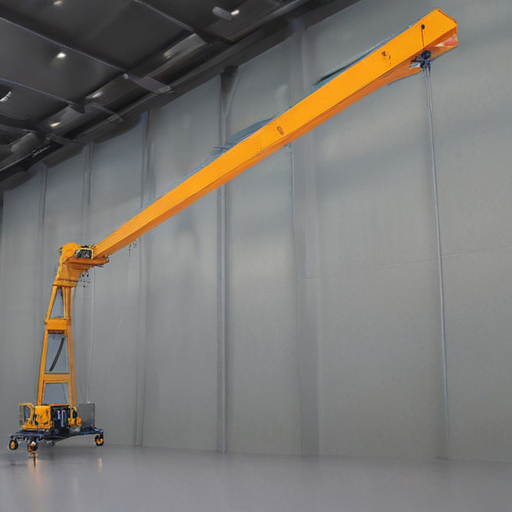
How to use “wall travelling jib crane”
A wall travelling jib crane is a versatile lifting device used for material handling in various industrial environments. Here’s how to use it effectively:
1. Initial Inspection: Before operation, ensure the crane is in good condition. Check for any visible damage to the tracks, jib arm, hoist, and controls.
2. Positioning: Align the jib arm along the wall track to the desired position. Use the manual or electric trolley to move the hoist along the jib arm as needed.
3. Loading: Securely attach the load to the hoist using appropriate lifting gear such as slings, hooks, or chains. Ensure the load is within the crane’s rated capacity.
4. Lifting: Engage the hoist controls to lift the load carefully. Ascend slowly, ensuring the load is stable and balanced.
5. Travelling: Move the load horizontally along the wall track by operating the trolley controls. Ensure the path is clear of obstructions and personnel.
6. Positioning the Load: Once the load reaches the desired location, lower it carefully using the hoist controls. Ensure that it is placed securely without tilting or binding.
7. Disengaging: Once the load is stable on the ground, detach the lifting gear from the load.
8. Shutdown and Inspection: After usage, return the jib arm to a safe position. Perform a post-use inspection to ensure everything is in good condition for the next use.
9. Safety Precautions: Always follow safety guidelines, wear appropriate Personal Protective Equipment (PPE), and make sure the crane is operated by trained personnel only.
By following these steps, you can ensure efficient and safe operation of a wall travelling jib crane.
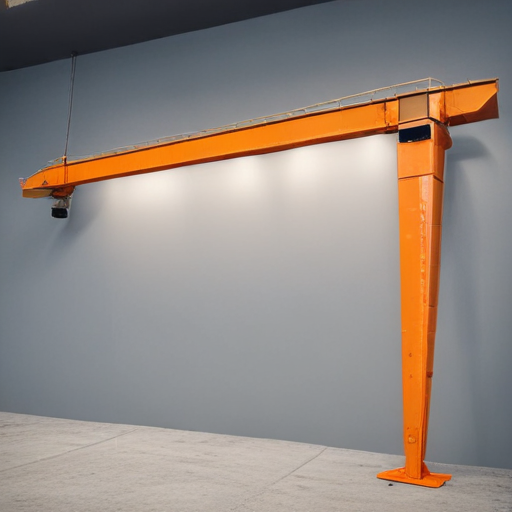
“wall travelling jib crane” Comparative Analysis
A wall travelling jib crane is an efficient and versatile lifting solution used in various industrial settings for handling materials. Unlike traditional overhead cranes or stationary jib cranes, the wall travelling jib crane encompasses unique features that set it apart.
Design and Structure:
A wall travelling jib crane is mounted on a wall or other vertical support structure and can traverse along a fixed track. It includes a horizontal boom or arm that extends outwards, providing a range of motion. This design allows them to cover a wider area than fixed jib cranes while requiring less floor space compared to overhead cranes.
Flexibility and Reach:
Traditional fixed jib cranes have limited flexibility owing to their fixed base, whereas wall travelling jib cranes can move along the length of the track, thus offering a broader operational area. Overhead cranes typically cover entire workspaces but require substantial structural support, making wall travelling jib cranes a suitable alternative for intermediate lifting tasks.
Installation and Maintenance:
Wall travelling jib cranes are generally easier and less costly to install compared to overhead cranes, which require extensive infrastructure. Additionally, maintenance is straightforward due to their accessible components. The fixed track enhances stability and precision of movement, critical for certain manufacturing processes.
Load Capacity:
While wall travelling jib cranes can handle significant weights, they generally support less maximum weight compared to overhead cranes. However, advancements have increased their load capacities, making them suitable for many medium to heavy-duty applications.
Cost-Effectiveness:
In comparison to overhead cranes, wall travelling jib cranes are typically more cost-effective due to lower installation and structural requirements. They strike a balance between capability and cost, ideal for operations needing horizontal and vertical material handling without the extensive overhead framework.
In summary, wall travelling jib cranes offer an optimal blend of flexibility, reach, and cost-efficiency. They serve as a practical and economical choice for various industries needing efficient material handling, positioned between the capabilities of fixed jib cranes and overhead cranes.
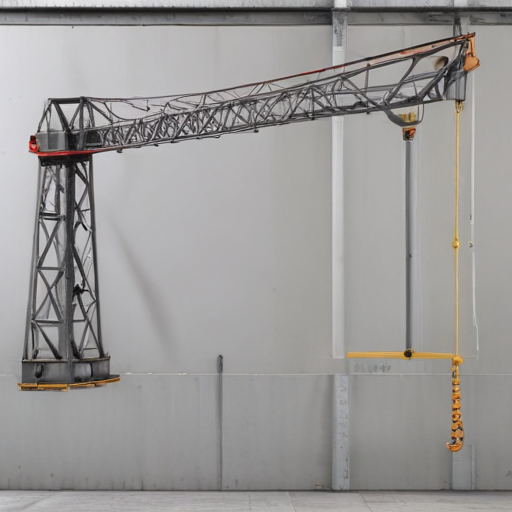
“wall travelling jib crane” Warranty and Support
Warranty and Support for Wall Travelling Jib Crane
Our Wall Travelling Jib Crane comes with a comprehensive warranty and support package to ensure maximum reliability and user satisfaction.
Warranty:
We offer a standard 24-month warranty from the date of installation, covering all manufacturing defects. This warranty includes:
1. Parts and Labor: Free replacement or repair of defective parts, with labor costs included.
2. Service Calls: Unlimited service calls within the warranty period, ensuring prompt and efficient resolution of any issues.
3. Maintenance Checks: Regular maintenance checks every six months to keep the crane in optimal condition.
Exclusions:
The warranty does not cover:
– Damage due to misuse or improper handling.
– Wear and tear due to normal crane operation.
– Unauthorized modifications or repairs.
Support:
Our support team is dedicated to providing exceptional service throughout the lifespan of your Wall Travelling Jib Crane.
24/7 Customer Service:
Our support hotline is available around the clock for immediate assistance, troubleshooting, and guidance.
Expert Technicians:
Certified technicians can be dispatched for on-site repairs or maintenance within 48 hours of a service request.
Spare Parts Availability:
We maintain a robust inventory of spare parts to minimize downtime and ensure quick replacement.
Training and Documentation:
Comprehensive user manuals and training sessions are provided to ensure your team operates the crane safely and efficiently. Additionally, online resources and video tutorials are available for ongoing learning.
Extended Support Plans:
For continued peace of mind, we offer extended warranty and support plans beyond the initial 24-month period, tailored to your specific needs.
For any warranty claims or support inquiries, please contact our dedicated customer service team at 1-800-CRANE-HELP or email [email protected].
With our robust warranty and support services, you can rest assured that your Wall Travelling Jib Crane will remain a reliable asset to your operations.
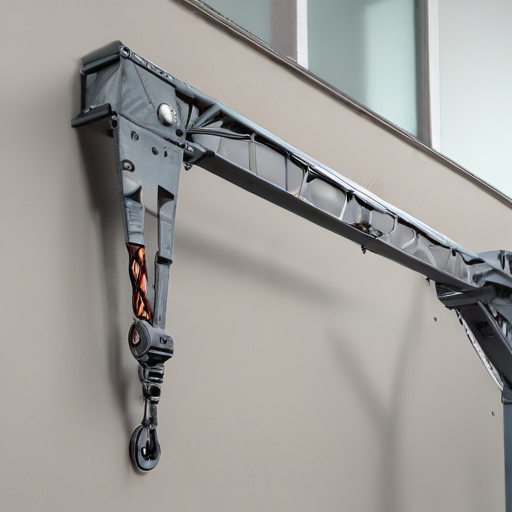
List “wall travelling jib crane” FAQ
Sure, here’s a set of frequently asked questions (FAQ) about wall travelling jib cranes, keeping it concise:
1. What is a wall travelling jib crane?
A wall travelling jib crane is a type of crane that is mounted on a wall and can traverse horizontally along a fixed rail or track. It is used in industrial settings for lifting and moving heavy loads.
2. How does it differ from a floor-mounted jib crane?
Unlike floor-mounted jib cranes, wall travelling jib cranes don’t occupy floor space and can cover a wider area within the workspace, thanks to their rail-mounted design.
3. What are the typical applications?
They are commonly used in manufacturing plants, workshops, assembly lines, and warehouses for tasks such as material handling, loading and unloading, and machine tending.
4. What are the advantages of a wall travelling jib crane?
– Space-saving design
– Flexibility in movement
– Can service multiple workstations
– Usually easier to install and maintain than floor-mounted systems
5. What is the load capacity of these cranes?
The load capacity varies but typically ranges from 0.5 to 10 tons, depending on the model and manufacturer.
6. What is the typical span or reach of these cranes?
The span or boom length can vary but is generally between 3 to 12 meters, depending on the specific requirements and design.
7. Can the height and movement be customized?
Yes, most wall travelling jib cranes can be customized in terms of height, reach, and movement to meet specific industrial needs.
8. Are there safety features?
Yes, they come equipped with various safety features, such as limit switches, overload protection, and emergency stop functions.
9. What kind of maintenance is required?
Regular inspections, lubrication of moving parts, and periodic safety checks are essential to ensure smooth operation and longevity.
10. How is it powered?
They are typically powered electrically, with manual options available for smaller capacities.
11. How is installation handled?
Installation usually requires a professional technician to ensure the crane is securely mounted and aligned on the wall track.
12. Can it be integrated with other systems?
Yes, it can often be integrated with other material handling systems such as overhead cranes or conveyors for enhanced workflow efficiency.
This concise FAQ aims to cover the main points about wall travelling jib cranes, within 300 words.
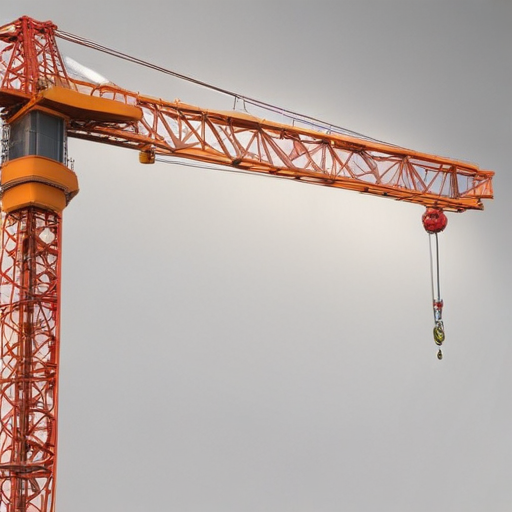
Top 10 FAQ with answer about wall travelling jib crane for Buyer Sourcing from China
Top 10 FAQs About Wall Travelling Jib Crane for Buyer Sourcing from China
1. What is a Wall Travelling Jib Crane?
A wall travelling jib crane is a type of crane mounted on a wall or other vertical surface, which travels horizontally along a fixed rail. It’s ideal for areas with limited floor space and provides versatile material handling solutions.
2. What are the key benefits?
Benefits include space-saving design, flexibility in handling diverse loads, easy installation, and efficient use of workspace. They also facilitate streamlined workflow and increased productivity.
3. How do I choose the right model?
Consider factors like load capacity, height and length of the jib, workspace dimensions, and specific operational needs. Consult with manufacturers for tailored recommendations.
4. What load capacities are available?
Load capacities typically range from 0.5 to 5 tons, but custom models can handle higher capacities depending on your requirements.
5. What is the typical delivery time from China?
Standard models usually ship within 4-8 weeks. Customized orders may take longer, depending on specifications and production schedules.
6. How is installation handled?
Installation can be managed by the buyer’s in-house team following the manufacturer’s guidelines or by hiring a professional installation service. Some manufacturers offer on-site installation and training.
7. What are the maintenance requirements?
Regular inspection and maintenance are essential for safe operation, including checking structural components, lubrication, and ensuring the electrical system functions correctly. Manufacturer guidelines should be followed.
8. Can the crane be customized?
Yes, manufacturers in China offer customization options to meet specific needs, including different load capacities, jib lengths, mounting configurations, and control systems.
9. What certifications should I look for?
Essential certifications include ISO 9001 (Quality Management), CE (European Conformity), and CCC (China Compulsory Certification). Additional industry-specific certifications may also be relevant.
10. How do I ensure product quality?
Work with reputable manufacturers who provide detailed product specifications, quality assurance processes, and references. Request for pre-shipment inspection reports or third-party inspections for added assurance.
Remember, thorough due diligence is crucial. Evaluate manufacturers based on product quality, certifications, customization options, and client reviews to make an informed decision.

